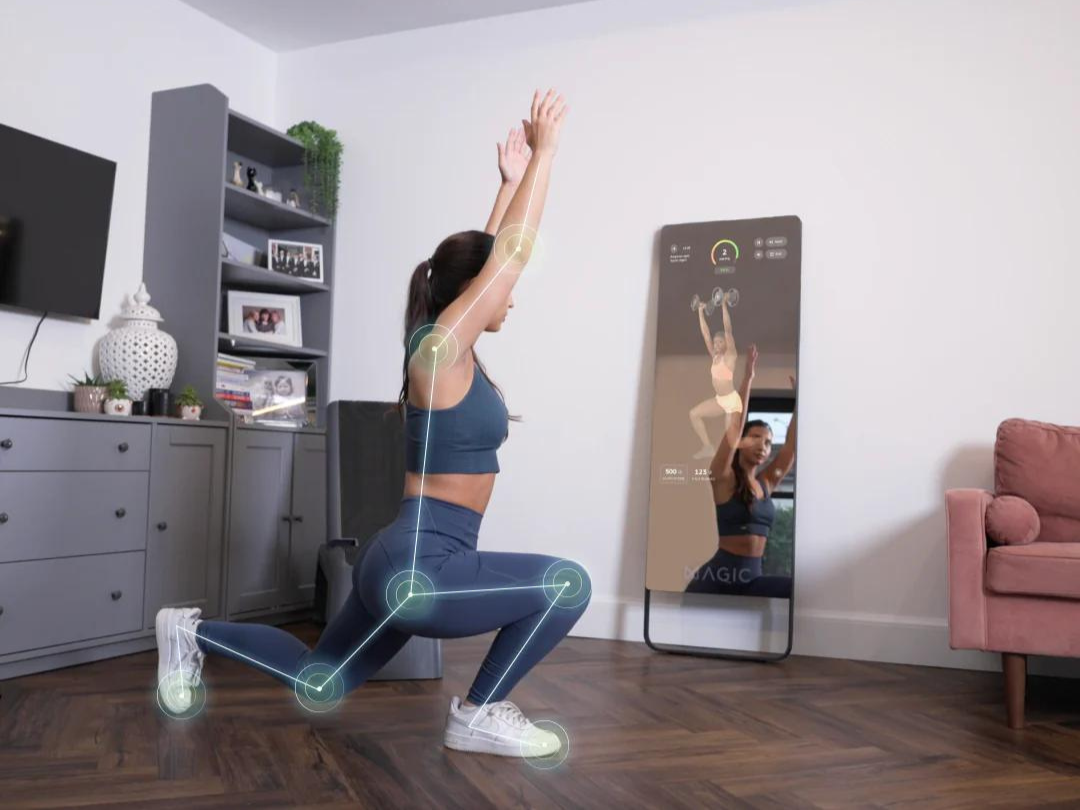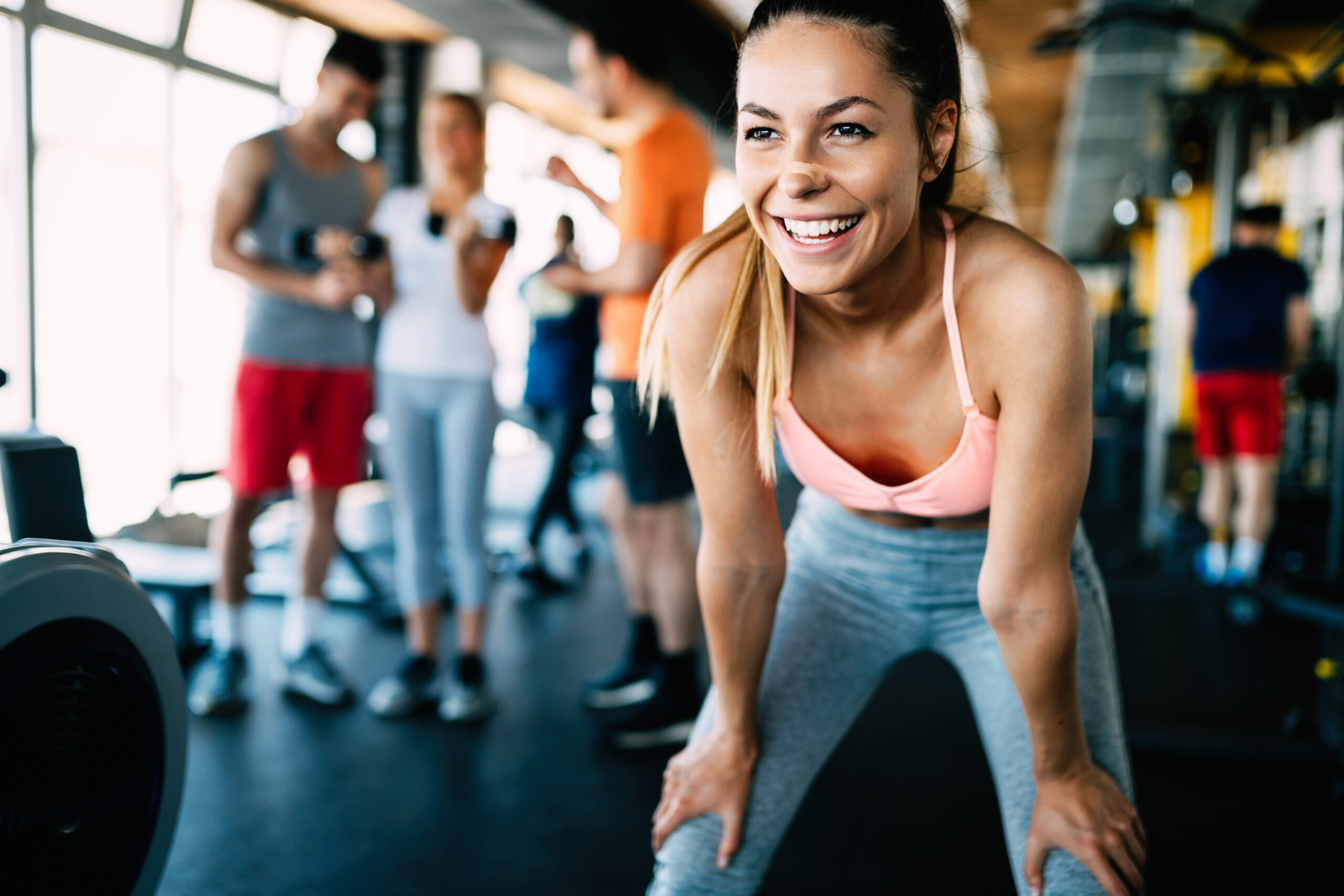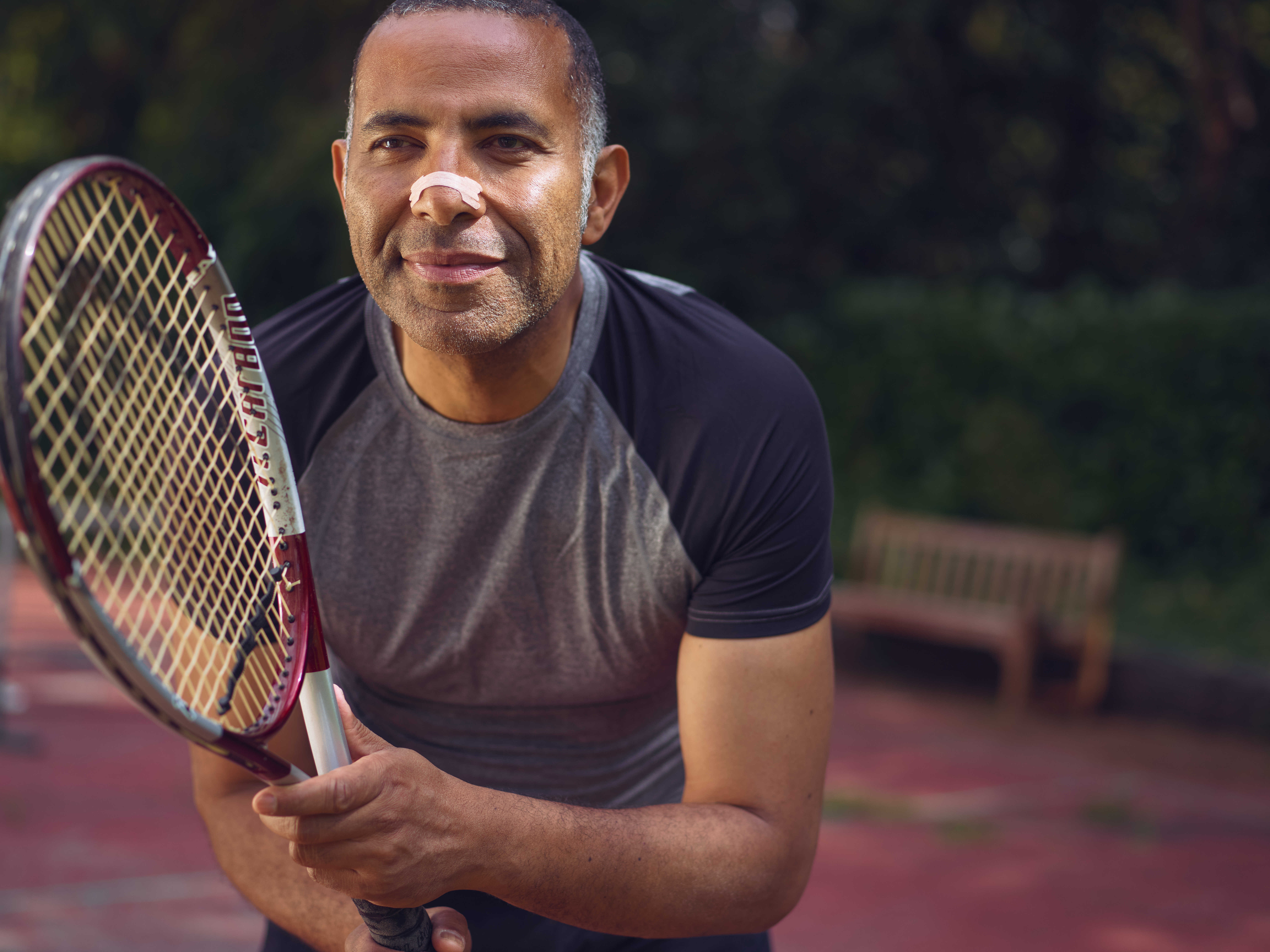
September 3, 2024
In Blogs

Until recently, consumer spending on fitness was limited to gyms and health clubs. But now, as societies worldwide focus more on holistic wellbeing, fitness products and campaigns are exploding across all categories, from fitness-tracking wearables and AI home fitness equipment to performance-enhancing vitamins, minerals, and supplements (VMS) and protein-packed food and drinks. Dive into this blog post to explore innovative ways new and established brands are approaching the rapidly expanding fitness market.
Wearable technology has revolutionised how people monitor their health and fitness. The fast-growing market is predicted to reach $572.06 billion by 2033¹. As technology advances, brands across the board are racing to launch the next best-selling wearable, setting their products apart through affordability, accessibility, and effectiveness.
Big brand devices such as Apple, Garmin, and Fitbit have dominated the wearable market for years with their high-quality fitness-tracking watches. However, diverse smartwatch and ankle/wrist strap brands are gaining an edge through competitive pricing, sustainability initiatives, and comprehensive fitness tracking capabilities.
The ultra-light Whoop Strap is making waves among fitness enthusiasts and athletes due to its ability to track recovery time as well as sleep and workout performance. Moreover, Moov sets its products apart through affordability and unique features, like coaching, guided workouts, and movement tracking for specific activities like circuit training, swimming, and boxing.
Business incubators and research establishments have recognised a growing need for tracking devices in smaller, more seamless formats, such as smart clothing and digital skin art (smart tattoos)².
The Samsung Group has created smart shirts that track the wearer’s breathing to gauge their fitness level and detect respiratory diseases. Meanwhile, Microsoft Research is developing tattoos laser-cut into personalised shapes and connected to devices via Bluetooth. As they can be applied to almost any surface, smart tattoos will provide a sustainable alternative to traditional wearables, minimising material waste, whilst enhancing health-tracking precision.
Worldwide, consumers are increasingly investing in fitness solutions that work for them, from sleek home exercise equipment and AI personal trainers to “lazy fit” workouts and apparatus that allow consumers to improve their fitness with minimal effort.
Famous for its high-tech stationary bikes and treadmills, Peloton combines fitness equipment with live and on-demand classes to create a connected fitness experience. As the exercise equipment market grows more crowded, Peloton has kept its edge over the competition and justified its premium price points by collaborating with leading personal trainers and A-List celebrities, including Beyonce³ and the Jonas Brothers4, to offer exclusive themed workout sessions.

Photos from Magic AI website*

MAGIC is transcending the home fitness market with its MAGIC AI Fitness Smart Mirror. Fitting seamlessly into consumers’ homes as an inconspicuous full-length mirror, this interactive device streams hyper-personalised live and on-demand workouts at a click of a button. Powered by the brand’s ReflectAI® artificial intelligence and body tracking, the MAGIC AI Mirror provides users with revolutionary real-time rep counting, form correction, calorie counting, and weight guidance, tailored to their fitness goals.
Technogym has designed high-density spine-stabilising Wellness Balls to encourage “active sitting”, empowering consumers to improve their core strength simply by sitting on the ball. Primarily used as a seat for people who sit at a desk, the Wellness Ball incites users to sub-consciously perform micro-movements that help strengthen the back and abdominal muscles. Consumers can also use the ball for core-focused trainer-led workouts, accessible via the Technogym smartphone app.
For consumers seeking a premium, eco-friendly home workout experience, NOHRD offers an innovative portfolio of sports equipment powered by water or the user instead of electricity. From Water Grinders that mimic sailors’ movements to Sprintbok curved treadmills that deliver running workouts with higher strength input, NOHRD products stand out due to their aesthetic, hand-crafted designs and sustainable materials.
As brands across the home fitness category continue to innovate, we can expect further advancements in AI integration, personalisation, and eco-friendly designs that cater to diverse consumer needs and improve accessibility worldwide.
The Vitamins, Minerals, and Supplements market has exploded across many areas, including fitness and holistic wellbeing. There has been a significant rise in Vitamins, Minerals, and Supplements (VMS) that enhance workout performance by improving focus and mental cognition.
ONNIT’s Total Human comprehensive supplement packs, for example, include a variety of vitamins, minerals, amino acids, and herbal extracts. It is divided into Day and Night packs to support both daytime energy and nighttime recovery. Used by casual gym-goers and athletes alike, these mixed VMS products improve energy levels, enhance mental clarity, support muscle recovery, and promote better sleep.
Other fitness-focused VMS products help improve the consumer’s metabolism and digestive health, altering the way the body utilises energy, breaks down fat, and builds muscle. Myprotein and Quest Nutrition, for example, offer a broad range of sports nutrition products, including protein powders, vitamins, and pre-workout supplements, all tailored to support various fitness goals. These products are designed to enhance muscle growth, aid in recovery, and improve endurance.
In this way, the VMS market will likely continue to evolve with sophisticated formulations, integrating nutritional science and technology to offer personalised solutions tailored to consumers’ unique lifestyles and goals.
From cereals and snacks to frozen meals, and milk blends, diverse food and beverage brands are increasing the protein in their products to attract fitness-focused shoppers.
Many traditional dairy and plant-based milk brands have broadened their ranges to include high-protein options. Biotiful Gut Health has launched a kefir protein range, drawing attention to the muscle repair and overall health benefits of its high-protein kefir drinks. Similarly, Alpro has created a “Plant Protein” range of soya drinks and yoghurts with bold packaging highlighting the protein content of each serving. The brand also features recommendations from former footballer and fitness influencer, Peter Crouch, front and centre on their website, positioning its products as the go-to for athletes.
Brands such as Grenade, Flourish, and ELEAT offer health-conscious consumers a high protein, low carb range of snacks and cereal, scientifically designed to sustain energy, reduce cravings, and promote muscle recovery. ELEAT has taken a step further to build a loyal following in fitness enthusiast consumer circles by featuring reviews from sports professionals, including the England Rugby Nutritionist, as well as ultra runners and personal trainers.
Frive, Myprotein, and Muscle Food are just a few of the brands that have extended their offerings to include on-the-go meals with added protein. Many brands, including John West, have redesigned the packaging and positioning of their existing products to highlight the protein content. Others, like The Gym Kitchen, specialise in performance-enhancing foods, developing varied product lines, which are macro-counted, high in protein, and lower in calories.
Numerous consumer healthcare brands are successfully targeting fitness enthusiasts with their existing products through strategic brand positioning and advertising initiatives.
Breathe Right markets its nasal strips as a simple yet effective solution for improving breathing during exercise. Their adverts often showcase athletes experiencing better airflow and improved performance, appealing directly to those who struggle with nasal congestion during workouts.

Breathe Right promotional asset

Breathe Right promotional asset
Myrkl, on the other hand, positions its supplement as an aid for performance and recovery. Their advertising highlights the scientific benefits of their product, such as reducing tiredness and fatigue, supporting the immune system, and contributing to normal energy levels, making them attractive to those who want to push their limits without compromising on recovery.
Through tailored advertisements, influencer partnerships, and strong visual storytelling, both brands effectively tap into the specific needs of fitness enthusiasts, driving engagement and building brand loyalty in the competitive consumer healthcare market.
Let’s not forget the multitude of brands building awareness among fitness-focused consumer groups through influencer partnerships.
Yoga apparel brand, Alo Yoga has connected with the wider fitness market by partnering with influencers, such as Maddison Rotner and Camai Brandenberg, who practice Pilates, strength training, HIIT, and holistic wellness. Not only do these influencers promote Alo Yoga’s range of apparel to their respective audiences, but they also hold Live workouts on the Alo Yoga social platforms, extending the brand’s reach beyond traditional yoga enthusiasts.
Meanwhile, VMS company, Ritual is building a presence in the fitness market through Health & Wellness influencers, like Massy Arias, who promote its multivitamins as part of a holistic approach to fitness. These influencers often share how Ritual’s products complement their fitness routines, appealing to niche audiences that prioritise both fitness and overall health.
Since the pandemic and the rise of fitness influencers, the world of workout apps has rocketed. The Global Fitness App Market is poised to grow to USD 4. 80 billion by 2031, growing at a CAGR of 17.7%5.
While apps like Fitbit and Strava enable users to track their workout progress and access motivational tips, virtual reality apps, like Meta Quest, are transforming the way individuals engage in fitness activities. From VR martial arts workout games, Les Mills Body Combat XR and FitXR, in which users punch, kick, and dodge virtual objects flying towards them to Supernatural Unreal Fitness workouts that transport users to beautiful locations around the world, VR apps add an element of fun and engagement to traditional fitness routines.
Meanwhile, traditional and VR apps alike are incorporating mental health features, such as stress tracking, meditation and mindfulness practices, into their offerings. Fitness coach Christa Dipaolo, for example, has added short meditation sessions and vlogs on stress and anxiety management to her kickboxing workout platform, Boxing & Bubbles. Moreover, she regularly schedules live training sessions for her subscribers, catering to the growing consumer desire for real-time workouts with a community atmosphere.
With thousands of wellness apps at all price points offering everything from circuit training and yoga flows to HIIT dance routines, the competition is intense. Only through continuous development and staying attuned to consumer requirements can businesses set their products apart.
The fitness market is diverse and dynamic, with brands adopting various strategies to meet the needs of health-conscious consumers. From wearables and fitness equipment to supplements and protein-enriched foods, these brands are innovating and collaborating to stay relevant in a competitive landscape. By understanding and leveraging these trends, companies can effectively target fitness-conscious consumers and achieve sustained growth in this evolving market.
If you are looking to develop a new brand or tailor an existing one to the growing category of health and fitness, get in touch with our brand-building experts. With 30 years of Health & Wellness industry experience and end-to-end brand management capabilities, Ceuta Group, an IQVIA business, has empowered hundreds of brands to grow a strong, omnichannel presence across the globe.
To find out more about how to unlock the true potential of your brand, get in touch.
Contact us